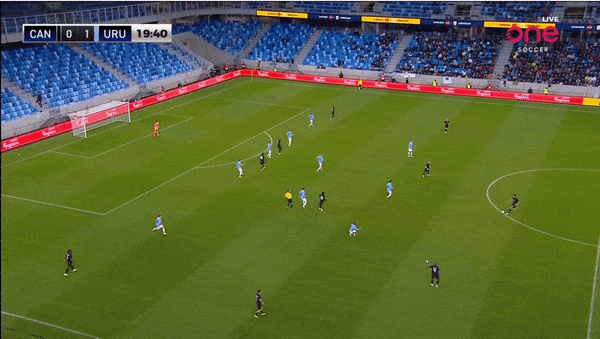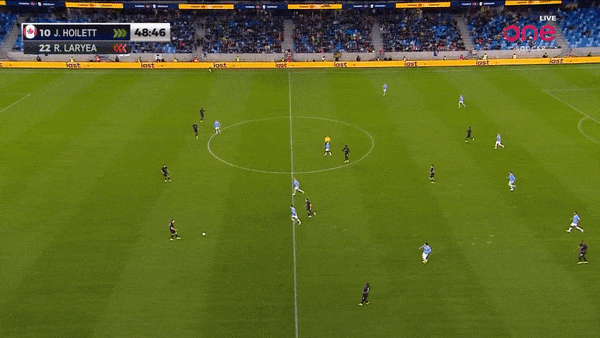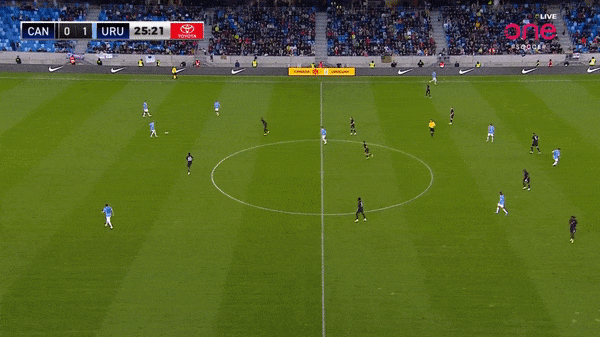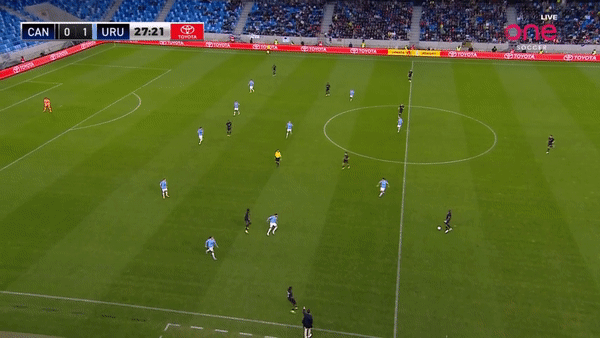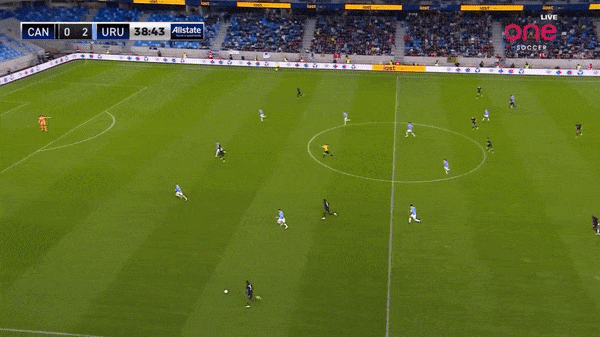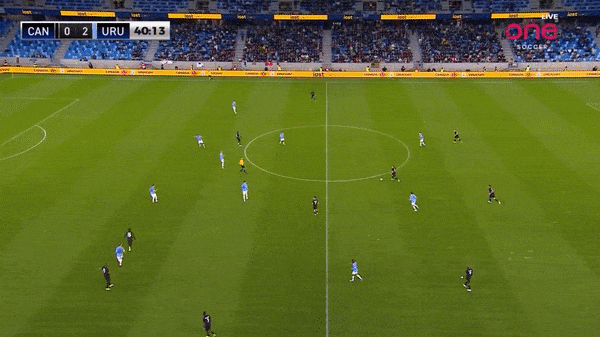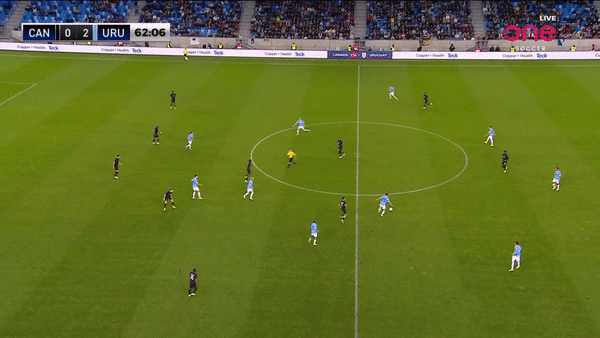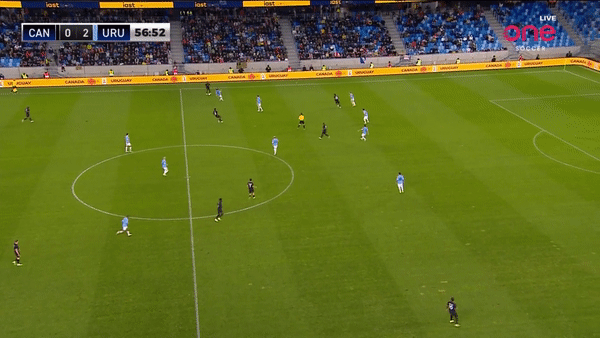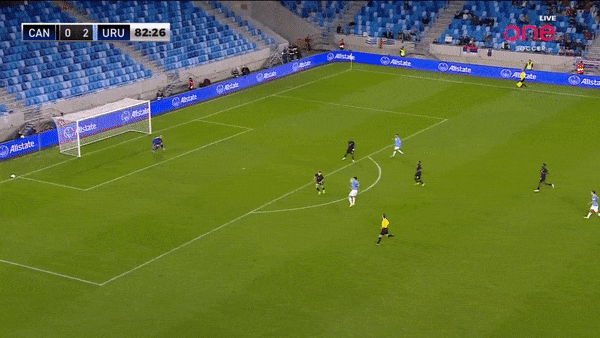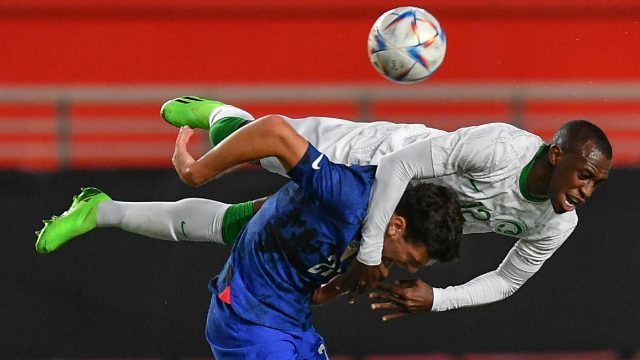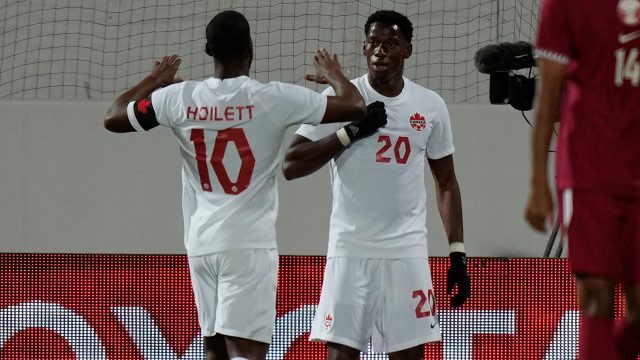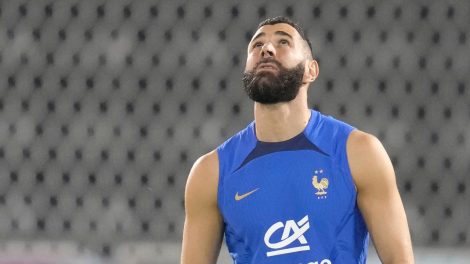In 57 days, the Canadian men’s national team will play its first World Cup match since 1986 against Belgium.
Having not faced any teams outside Concacaf since January 2020, it was imperative that Canada played against nations from outside its region — especially those at the top of the pyramid — to prepare for Belgium, Croatia and Morocco in Group F.
Not only did Canada receive that chance against Uruguay, the No. 13-ranked nation in the world, in a 2-0 loss on Tuesday, it learned some valuable lessons heading into the World Cup window.
Here is what we learned about Canada in the friendly defeat.
GAME OF MARGINS
Sports are usually whittled down to one big play, or a handful of key moments.
This was one of those occasions. The clinical finishing certainly made the difference for Uruguay but there were specific sequences that summed up the match for both sides.
Uruguay’s transitions and high press were lethal from the outset and it hindered Canada’s ability to play out from the back. Steven Vitoria was rattled a couple times and conceded some costly turnovers.
Even some of the passes Vitoria completed under pressure placed his teammates in compromising positions.
Distribution under pressure has never been Vitoria’s strength, so all the more reason to have Stephen Eustaquio, or Atiba Hutchinson if he was fit, to drop into the defence when Canada has possession to help orchestrate play in those situations.
To the back line’s credit, it contained Uruguay for the majority of the second half, although the job was likely done at that stage. Regardless, there are some positives to carry into the Japan friendly.
“We felt like we dominated, kept them out of our box [in the second half],” said defender Kamal Miller. “It’s a positive for our backline that we dominated and shut out some some world-class players.
“We know that Belgium, Croatia, all the other teams in the World Cup, even Japan leading up to the tournament, that’s another step above. We’re just going to look to keep building the foundation and get it right from the back and give our guys at the front a chance to win us games.”
Speaking of the midfield, as solid as Eustaquio and Samuel Piette performed in this window, there are still doubts as to whether they are the ideal pairing in matches of this magnitude.
Piette and Eustaquio as a partnership works best in games where Canada mainly bypasses the midfield and relies on the flanks. If it wants to dictate the tempo, then a trio is required.
A major reason why was on display in the 26th minute. Piette, as he often does, pushed up to engage in the press against Nicolás De La Cruz, but was a couple steps too slow, leaving acres of space in behind with the defence exposed.
That won’t alleviate concerns about a lack of pace involving an Eustaquio-Piette double pivot, especially against Croatia’s dynamic midfield trio of Marcelo Brozovic, Luka Modric and Mateo Kovacic at the World Cup.
Among all the issues in the opening half-hour, though, the back-post defending is Canada’s Achilles’ heel. It has been for more than a year. It’s easier to combat the buildup from the back or organization when pressing. But if Alistair Johnston is going to be a centre-back, there has to be a contingency in place to mask his weaknesses in the air.
During a counter-attack that exploited all of the aforementioned problems for Canada in the first half, Darwin Núñez wasted a prime chance at the back post.
Five minutes later, Núñez made sure he didn’t waste a second glorious shot.
Maybe switching to a back four with Johnston at right-back is the way to go.
TALE OF TWO GOALS
For all of the GIFs and fancy phrasing, football comes down to one area: finishing. Uruguay had six shots to Canada’s 11. Two hit the target for the Uruguayans — both of their goals. Three were on frame for Les Rouges, who failed to convert.
“I think when you have that much opportunity, you got to take it,” said Canada coach John Herdman after the game. “You see the level, how clinical Uruguay were in taking their moments and Canada, it just felt we wanted that extra pass, that extra touch.”
It wasn’t for a lack of trying. Alphonso Davies was doing everything he could to create chances from open play. There were some hesitant moments, which plagued Canada in the game but he made up for it with a few sensational plays.
Unfortunately, forward Cyle Larin needed “that extra touch” to corral the ball and wasted this terrific through ball.
Jonathan David also required “that extra touch” after Davies fed him in the box.
When the incisiveness was present, goalkeeper Sergio Rochet was up to the task.
It’s difficult to glean much from the second half when Uruguay led 2-0 without really pressuring Canada after Núñez’s goal. But like the loss to the U.S. at the 2021 Gold Cup, there was an emphatic response. There just wasn’t any killer instinct in front of goal.
“If we tied this match but we really didn’t control the game, I would be mad,” said Eustaquio. “To be honest, I’m proud because we controlled the game. We lost 2-0, but it’s a test for Qatar in two months, and I think we’re going to be more ready.”
“As I said to the players, we’re not going to get a prize for a performance award at the World Cup,” Herdman stated. “I think we were happy just to try and control the game and get into areas. We’ve got top-level strikers, we’ve got top-level wingers, we’ve got good midfielders. We have the ability to do it. The performance was where I hoped it would be but we have to win games and if you create that many opportunities, there’s got to be someone creating end product.”
KONE IS A LOCK
Just like Friday’s win over Qatar, Ismael Kone logged around 30 minutes against Uruguay and capitalized on the opportunity.
Kone’s ability to spray passes across the pitch and progress the ball under pressure are two qualities that can behoove Canada at the World Cup. If he’s able to translate this against Uruguay…
… to Japan, Belgium, Croatia and Morocco, then Kone isn’t just a lock for the World Cup squad. He could (and probably should) be in contention to start games in Doha.
It’s wild to say for a 20-year-old who had no professional appearances prior to the 2022 MLS season, but that’s how meteoric Kone’s rise has been. He deserves this.


